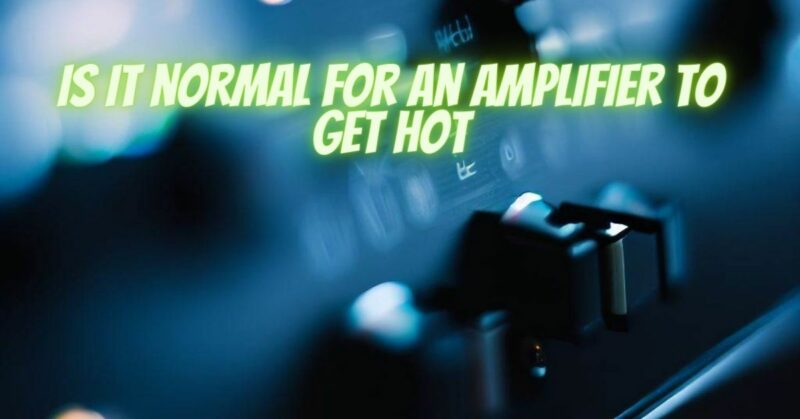When using a stereo amplifier, it is not uncommon for it to generate heat during operation. However, understanding the reasons behind amplifier heat and knowing what is considered normal can help ensure optimal performance and prevent potential damage. In this article, we will explore the factors that contribute to amplifier heat and provide insights into what is considered normal for a stereo amplifier. Let’s delve into the topic!
- Power Dissipation: Amplifiers generate heat as a byproduct of their operation. The primary cause of heat is power dissipation, which occurs when electrical energy is converted into audio output. The more power an amplifier delivers, the greater the heat it will produce. Therefore, larger and more powerful amplifiers tend to get hotter than smaller ones.
- Amplifier Design and Efficiency: Amplifier design plays a significant role in heat generation. Class A amplifiers, known for their high-quality sound, typically run hot because they have a constant current flowing through their output stage, regardless of the audio signal. On the other hand, Class AB, Class D, and Class H amplifiers are designed to be more efficient, resulting in less heat generation during normal operation.
- Ventilation and Cooling: Proper ventilation and cooling are crucial for maintaining safe operating temperatures for your amplifier. Some amplifiers have built-in fans or cooling systems to dissipate heat more effectively. Ensure that your amplifier has enough space around it for airflow and avoid placing it in enclosed spaces or stacking other components on top of it, as this can restrict ventilation and lead to excessive heat buildup.
- Load and Volume: The load and volume levels at which you operate your amplifier can affect its temperature. Higher volume levels and lower speaker impedance (i.e., more demanding loads) can increase the amplifier’s power output and, consequently, its heat generation. It’s important to match your amplifier’s power capabilities to the speakers’ requirements to ensure efficient operation and minimize excessive heat buildup.
- Thermal Protection: Modern amplifiers often incorporate thermal protection mechanisms to prevent damage due to excessive heat. These safeguards automatically shut down or reduce power output if the amplifier reaches a critical temperature. This protective feature helps prevent overheating and ensures the longevity of your amplifier.
- When to Be Concerned: While some heat generation is normal, it is essential to be aware of warning signs that may indicate a problem. If your amplifier becomes unusually hot to the touch or exhibits a significant increase in temperature compared to its previous operation, it could indicate an underlying issue. In such cases, it is recommended to consult the amplifier’s manual or seek professional assistance to identify and address any potential problems.
Conclusion:
It is normal for a stereo amplifier to generate heat during operation due to power dissipation and inherent design characteristics. Factors such as amplifier type, power output, load impedance, and ventilation play a role in determining the amount of heat produced. Adequate ventilation, appropriate speaker matching, and observing warning signs of excessive heat are important to maintain the amplifier’s performance and prevent potential damage. By understanding what is considered normal for your specific amplifier and taking appropriate measures, you can enjoy quality audio while ensuring the amplifier operates within safe temperature ranges.


